
Nanoscale Horizons(参考译名:纳米视野)(国际刊号)
- 主管单位:
- 主办单位:
英国皇家化学会、中国国家纳米科学中心
- 国际刊号:
2055-6764
- 国内刊号:
- 学科分类:
- 字数:
-
- 有无基金:
- 周期:
国际号刊-月刊
- 特殊属性:
外文期刊
- 电话:
- 邮箱:
nanoscalehorizons@rsc.org(官网邮箱)
- 复合因子:
0
- 综合因子:
0
- 收录:
- 级别:
期刊简介
《Nanoscale Horizons》期刊已被查看: 次
更新频次
单位占比
一作占比
投稿指南
1、该刊只有国际刊号。
2、投稿方式:在线投稿。
3、官网网址:
https://www.rsc.org/journals-books-databases/about-journals/nanoscale-horizons/
4、投稿系统:
https://mc.manuscriptcentral.com/nanohoriz
5、官网邮箱:nanoscalehorizons@rsc.org
6、出刊日期:月刊,一年出版12期。
2021年9月23日星期四
Nanoscale Horizons期刊介绍
【微信公众号“RSC英国皇家化学会”信息】
Nanoscale Horizons 是英国皇家化学会Horizons系列期刊之一,是由世界知名的编委会成员引领的创新型高质量学术期刊,旨在快速发表纳米科学和纳米技术领域意义非凡的重大成果。
本刊由英国皇家化学会和国家纳米科学中心联合推出,以跨学科前沿报道为特色,为包括物理,化学,生物,医学,材料,能源与环境,信息技术,检测科学,医疗保健,药物以及电子学等涉及纳米科学技术的各学科之间搭建了桥梁。
期刊范围
涵盖但不仅限于
☐ Synthesis of nanostructured and nanoscale materials
☐ Characterisation of functional nanoscale materials and bio-assemblies
☐ Properties of nanoscale materials
☐ Self-assembly and molecular organisation
☐ Complex hybrid nanostructures
☐ Nanocomposites, nanoparticles, nanocrystalline materials, and nanoclusters
☐ Nanotubes, molecular nanowires and nanocrystals
☐ Molecular nanoscience
☐ Theoretical modelling
☐ Single-molecules
☐ Plasmonics
☐ Nanoelectronics and molecular electronics
☐ Nanophotonics
☐ Nanochips, nanosensors, nanofluidics and nanofabrication
☐ Carbon-based nanoscale materials and devices
☐ Biomimetic materials
☐ Nanobiotechnology / bionanomaterials
☐ Nanomedicine
☐ Regulatory approaches and risk assessment
文章类型
通讯(Communications)
Nanoscale Horizons 发表的通讯是具有重大影响力的最新原创性成果。这种原创性不是指技术层面的改进,而是概念上的重大创新和独特见解;只专注于性能的新进展方面的文章不大能被接收,除非这种性能的改进对整个研究领域有举足轻重影响。
通讯要求单独提交不超过200个单词的“概念见解”陈述(“conceptual insights” statement),回应如下几个问题:
∙ 这篇文章提出了什么新观念?
∙ 这种新观念与现有观念有何不同?
∙ 该研究成果及提出的新观念对纳米科学和技术领域将有何深层次的影响?
“概念见解”陈述是用来帮助评审人确认该研究成果对材料科学的重要意义,不应像摘要一样对文章进行总结。文章接收后,该陈述将与正文一起发表。
注意:没有提交“概念见解”陈述的论文是不会被送审的。
通讯没有页数限制,但以3页为宜(期刊版面页)。我们建议作者对研究内容进行简明扼要的介绍,更多的详情可以放在补充信息supplementary information中。
综述(Reviews)
Nanoscale Horizons 发表高质量的,权威性的综述,阐述纳米科学和技术领域某个最前沿的研究进展。综述通常来源于编委和编辑约稿,同时也欢迎读者直接向编辑建议文章主题和作者人选。
综述文章是对现有文献的及时梳理及解析,面向期刊所有读者群体。Nanoscale Horizons 的综述与期刊其他类型文章一样,都需经过严格和完整的同行评审流程。
我们建议作者选定的综述课题是进一步发展已迫在眉睫或迫切需要,或对纳米科学和技术界具有普遍重大意义的研究方向。综述通常6-8页(期刊版面页),内容不包含任何未发表的原创性研究成果。
小综述(Minireviews)
Nanoscale Horizons 的小综述是纳米科学或技术界某个新兴研究领域的聚焦或总结(通常是过去两到三年的研究成果)。小综述并不致力于全面概述,而是着重突出最新最重要的进展,为新兴研究领域需要重点关注的方向提出看法。
小综述不应包含任何未发表的原创性研究成果,而是就某一领域未来的发展提出个人见解。文章长度以三页(期刊版面)为宜。
焦点文章(Focus articles)
Nanoscale Horizons 的焦点文章是针对某些经常被误解或需要更多解释的课题的教育性文章,可以社评或综述形式呈现。
焦点文章由编委和编辑邀请,同时也欢迎读者直接向编辑建议文章主题和作者人选。
Nanoscale Horizons投稿须知【官网信息】
Article Types
Nanoscale Horizons publishes:
Communications
Reviews
Minireviews
Focus articles
Comments
Communications
All original research published in the journal is in the form of Communication articles. These are exceptionally high quality and innovative reports that are of significant broad appeal to the nanoscience community at large. The research presented should provide new insight into the topic and demonstrate a new concept or a new way of thinking (a conceptual advance), rather than primarily reporting technological improvements. However, outstanding articles featuring truly breakthrough developments such as record performance of materials alone may also be published in the journal.
Nanoscale Horizons Communications must include a separate ‘new concepts’ statement. This statement should be a paragraph of no more than 200 words and should address the following questions:
What new concept has been demonstrated?
What differentiates this concept from existing research?
What additional insight does your work and the underlying concept bring to the nanoscience and nanotechnology?
This statement will be seen by editors and reviewers and will help ascertain the significance of the research. The statement should not be a summary of the work reported, as in the article abstract. If the paper is accepted, this statement will also be published. Please note that papers cannot be peer-reviewed without this statement.
Although there is no page limit for a Communication, the recommended length is three printed journal pages. Authors are encouraged to provide a succinct and relevant introduction to the research and to consider the use of the electronic supplementary information for additional material. Please see below for some examples of exemplar 'new concepts' statements.
See examples
Reviews
Reviews are typically commissioned by the Nanoscale Horizons editorial board and editorial office, although suggestions from readers for topics and authors of reviews are very welcome and should be directed to the editor. Nanoscale Horizons Reviews must be very high quality, authoritative, state-of-the-art accounts of the selected research field.
Reviews should be timely and provide insights based on existing literature as well as being of general interest to the journal's wide readership. All Reviews undergo a rigorous and full peer review procedure, in the same way as regular research papers.
Authors are encouraged to identify areas in the field where further developments are imminent or of urgent need, and any areas that may be of significance to the community in general. Reviews are typically six to eight printed journal pages in length
Minireviews
Minireviews are highlights or summaries of research in an emerging area of nanoscience or nanotechnology (typically from the last two to three years). They are not intended to be comprehensive overviews, but rather should highlight recent and important developments and provide insights into the emerging area on which they are focused. Minireviews should set the topic in the context of the relevant literature and may include perspectives of the future development of the field
Perspectives of the future development of the field are appropriate. The recommended length of a Nanoscale Horizons Minireview is three printed journal pages.
Focus articles
Nanoscale Horizons Focus articles are educational articles that can take the form of either an editorial or review article. They are designed to address topic areas which are often misunderstood or require greater explanation.
Focus articles are invited by the Nanoscale Horizons editorial board and editorial office. Suggestions from readers for topics and authors of Focus articles are welcome and should be directed to the editor.
Comments
Comments and Replies are a medium for the discussion and exchange of scientific opinions between authors and readers concerning material published in Nanoscale Horizons.
For publication, a Comment should present an alternative analysis of and/or new insight into the previously published material. Any Reply should further the discussion presented in the original article and the Comment. Comments and Replies that contain any form of personal attack are not suitable for publication.
Comments that are acceptable for publication will be forwarded to the authors of the work being discussed, and these authors will be given the opportunity to submit a Reply. The Comment and Reply will both be subject to rigorous peer review in consultation with the journal’s Editorial Board where appropriate. The Comment and Reply will be published together.
Submission and assessment process
On submission to the journal, all manuscripts are initially assessed by a team of professional Publishing Editors who have a wide range of scientific backgrounds. They make an assessment of whether the manuscript may be suitable for the journal, based on the scope and very high significance and broad general interest criteria required for publication. Publishing Editors are supported in this decision making by our academic Scientific Editors who are members of our Editorial Board. Only manuscripts that are successful during these initial assessments will be sent for full peer review. Full details of the initial assessment process can be found with our processes and policies.
The journal follows a single-blind peer review process and articles are typically sent to at least two independent reviewers for evaluation. Professional Publishing Editors are responsible for peer review and associated editorial decisions. The team are guided by our Editorial Board who set the scientific standards and guidelines for the journal. Our Editorial Board are all leading scientists who together have expertise across the breadth of nanoscience and nanotechnology.
上一篇:中南法律评论(原:原法)(集刊)(不收版面费审稿费)下一篇:棉花研究(英文版)(Journal of Cotton Research)(不收版面费审稿费)
《Nanoscale Horizons》同类自科综合期刊
-

科学技术与工程
北核,科核,武A-,CACJ-权威
CN中文-旬刊影响因子1.543
-
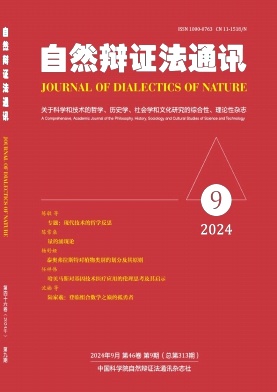
自然辩证法通讯(不收版面费审稿费)
C刊,北核,科核,AMI核心,武A-
CN中文-月刊影响因子1.052
-
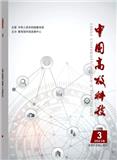
中国高校科技(原:中国高校科技与产业化)
AMI扩,武B+
CN中文-月刊影响因子1.63
-
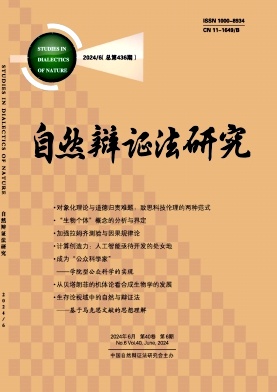
自然辩证法研究
C刊,北核,科核,AMI核心,武A
CN中文-月刊影响因子1.066
-
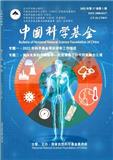
中国科学基金(不收版面费)
北核,C扩,CSCD,科核,AMI扩,武B+
CN中文-双月刊影响因子2.712
-
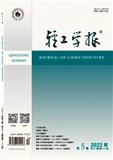
轻工学报(原:郑州轻工业学院学报(自然科学版))(不收版面费审稿费)
北核,武B+,CACJ-入库
CN中文-双月刊影响因子1.025
-
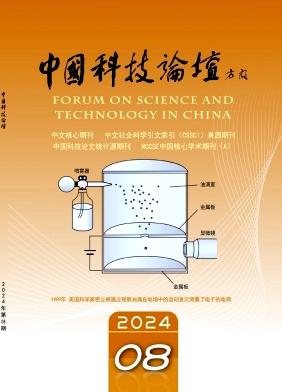
中国科技论坛
C刊,北核,科核,武A,AMI扩
CN中文-月刊影响因子2.895
-
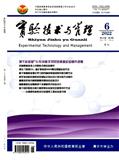
实验技术与管理
北核,科核,武A+
CN中文-月刊影响因子1.849
常见问题
-
Nanoscale Horizons杂志社官网、联系方式是什么?
Nanoscale Horizons杂志社官网:https://www.rsc.org/journals-books-databases/about-journals/nanoscale-horizons/
投稿网址:https://mc.manuscriptcentral.com/nanohoriz
投稿邮箱:nanoscalehorizons@rsc.org(官网邮箱) -
Nanoscale Horizons杂志是核心期刊么?
Nanoscale Horizons不是核心期刊,级别是:, 是:自科综合分类下的
-
请问你们是Nanoscale Horizons杂志社吗?
我们不是《Nanoscale Horizons》杂志社。本站主要从事期刊信息展示与期刊推荐,不是任何杂志官网,直投稿件请联系杂志社。本站仅提供免费的学术指导、论文辅导、期刊投稿信息整理收集服务。
-
你们指导服务后可以保证文章被发表吗?
期刊发表的成功与否,主要取决于文章内容的质量。编辑老师会根据研究领域、创新性等多因素进行考量。我们会帮助您理解期刊的发表要求,助力提升发表几率,从而增加发表的机会。
-
晋级论文能否在报纸上发表?
在学术界,论文的发表往往被视为研究者职业发展的重要一环。晋级论文,即为了获得更高职称或学术地位而撰写的学术论文,通常需在专业期刊上发表。然而,许多人可能会问
